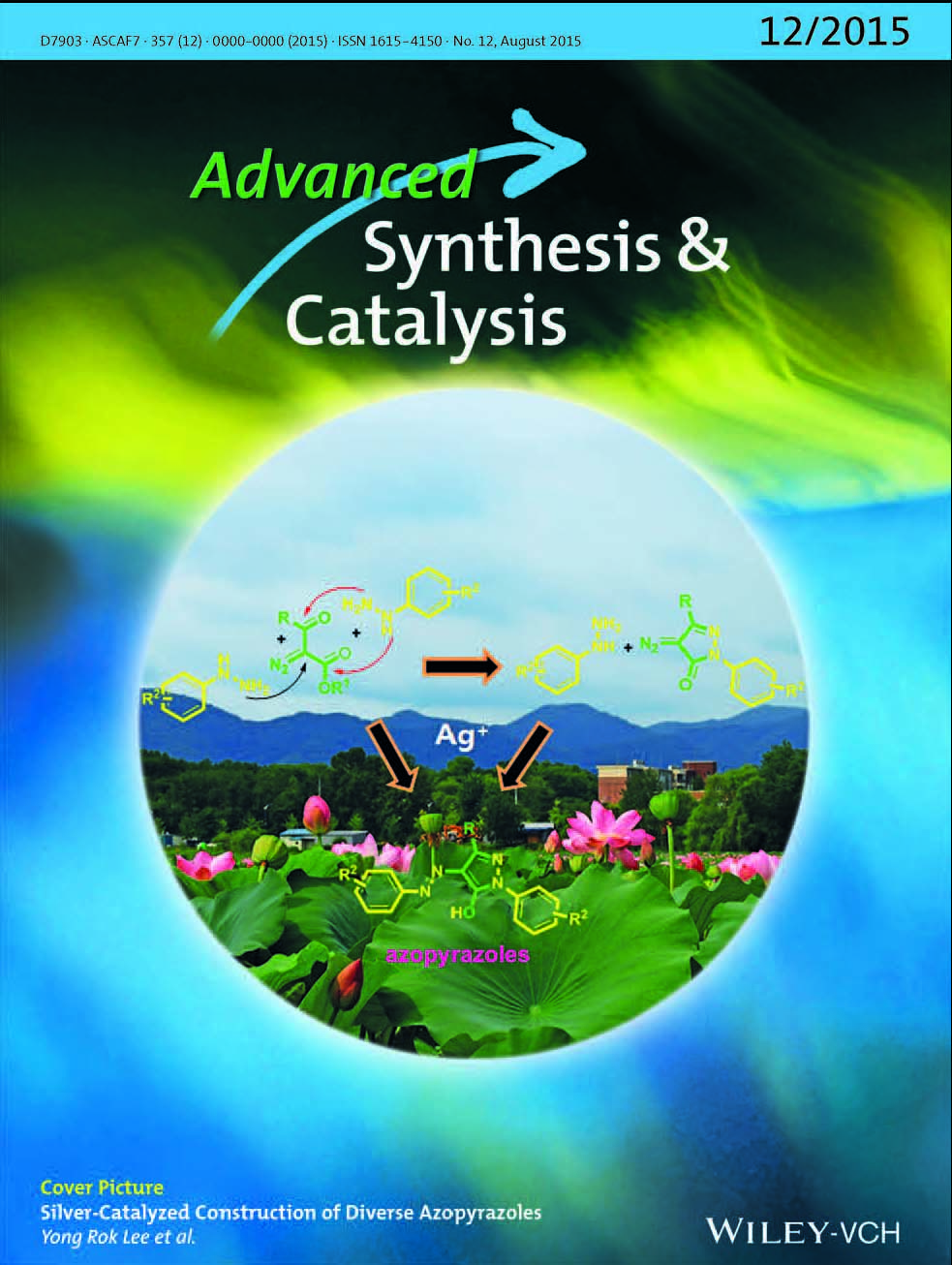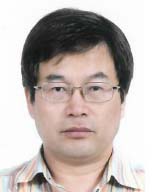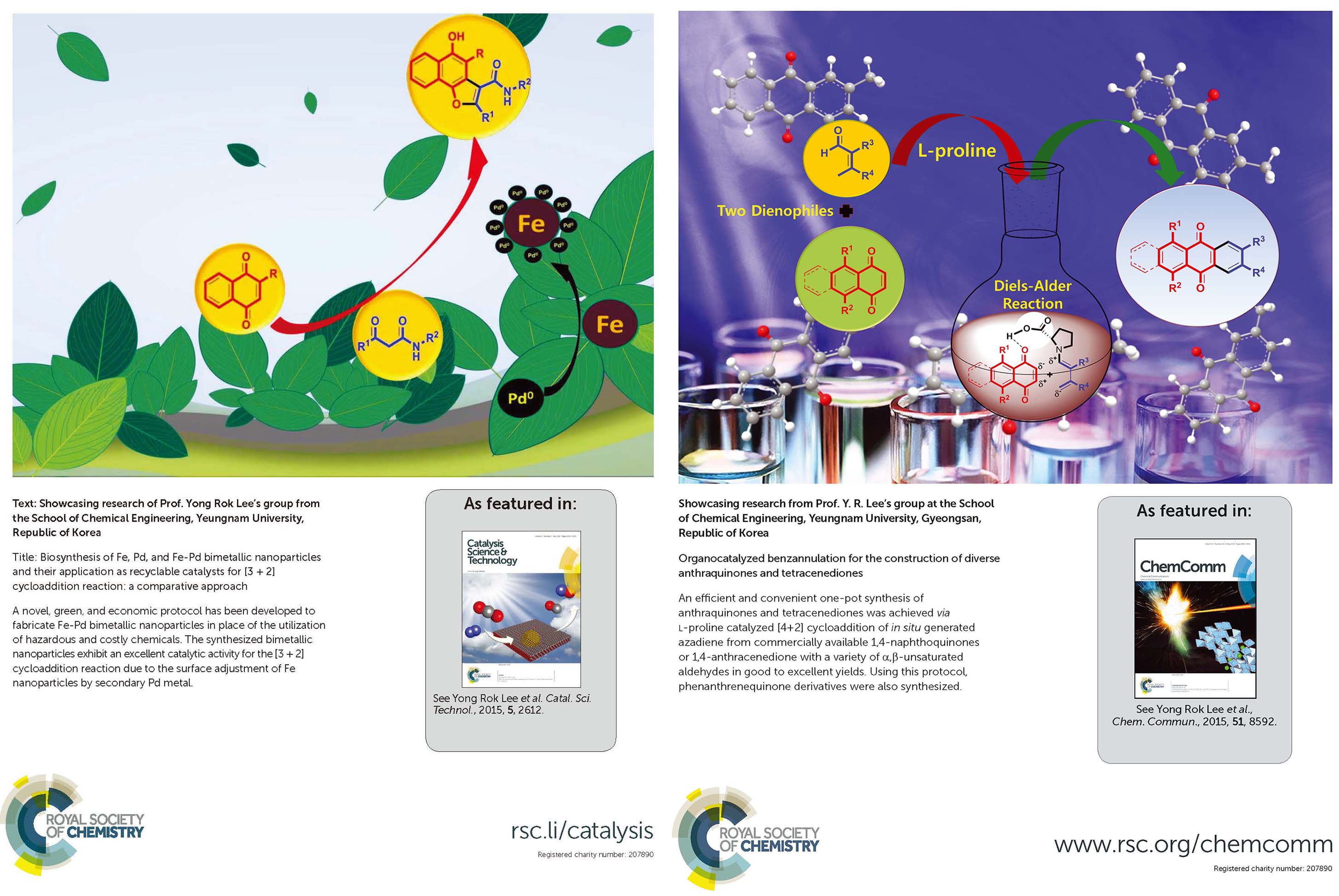Three Theses by Professor Lee Yong-rok Selected as Poster Paper for SCI Academic Journals N
No.88799- Writer pr
- Date : 2015.09.03 10:25
- Views : 7075
Three theses published in 2015 selected as poster paper for authoritative international academic journals
Development of safe, economic and eco-friendly organic response methods
Can be utilized in manufacturing various everyday products such as pharmaceuticals, electronic materials and perfumes
[August 24, 2015]

<A study recently published by Professor Lee Yong-rok was selected as the poster paper of a world acclaimed journal in the applied chemistry field>

Three papers that Professor of Chemistry Lee Yong-rok (56) recently published were all selected as poster papers for authoritative international academic journals.
The study ‘Construction of Various Types of Azopyrazole Cyclic Compounds using Silver Catalysts’ by Professor Lee, a leader in the organic compound field, was selected as the front page paper (photo above) and VIP study in the latest issue (August) of <Advanced Synthesis & Catalysis (Impact Factor 5.663)>, which is in the top 1.4% of the applied chemistry field.
In May, his papers such as ‘New Synthesis of Iron-Palladium Bimetal Nano-Catalysis and Application in Cyclic Reaction’ and ‘Synthesis of Anthraquinone and Tetrasendion of Various Forms using Organic Catalysts’ were selected as the end poster paper of <Catalysis Science &Technology, IF=5.426,> (bottom left) and <Chemical Communications, IF=6.834> (bottom right), respectively.
Through research, Professor Lee developed new organic reaction techniques that were never reported in the past using various types of catalysts. It has been assessed that through such organic reaction methods, physiological activities and functional compounds were easily and simply synthesized.

Professor Lee said, “The developed compounding method can be used safely using catalysts that can be easily purchased, and furthermore, because it is environment friendly and economical, it can be used widely in precision chemical product manufacturing such as new pharmaceuticals, electronic materials, dyes, and perfumes, so it is expected to contribute to national industries and economical development.” He said, “I would like to turn this honor to the graduate school students from Nepal, China, Vietnam and India who diligently participated in this study” as he expressed his gratitude. He also announced his plans to continue working in organic compound research such as pursuing joint research with other institutes to develop new drugs and electronic materials.
Professor lee, who was appointed as a professor of the YU School of Chemical Engineering in September 1995 published over 200 studies in SCI journals by conducting research on new physiological activation materials and functional organic molecular synthesis. He has also registered 36 patents. He has been actively engaged in research and in just the past two years, he published 50 papers in acclaimed international academic journals such as <Organic Letters, IF=6364>, the most authoritative academic journal in the organic chemicals sector published by the American Chemistry Association, and <Green Chemistry, IF=8.02> published by the British Chemistry Association. For his efforts, he was awarded the Academic Progress Award by the Korean Chemistry Association in 2008, and was selected as the best reviewer for two straight years in 213 and 2014 from <Tetrahedron>, an acclaimed academic journal in organic chemistry by Elsevier, the world’s largest publisher of academic journals. In <Noteworthy Chemistry> published by the American Chemistry Association in 2014, Professor Lee’s research was introduced in detail. Last year, he was selected as an excellent evaluator of the basic research projects of the National Research Foundation and he has also been continuously active as a judge for the world college evaluations by Britain’s college evaluation institute, QS. He is currently participating in the National Research Foundation’s Junior Researcher Support Project, Nano-Material Technology Development Project, and the Focus Research Center Projects. This study was carried out as part of this project.